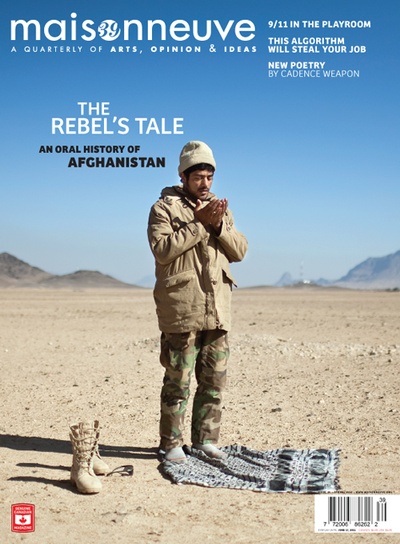
Our Spring 2011 Issue
March 10, 2011On this cover, photographer Philip Cheung captures an Afghan interpreter hired by the Canadian military as he prays during a foot patrol in the Zhari District, west of Kandahar City. In "We Felt No Mercy," Naheed Mustafa guides the reader through Afghanistan's oft-neglected history, as told by a man who has seen and done it all. Looking beyond the gory headlines, Mustafa hopes that we will learn from Afghanistan's past; only then, she writes, will its perpetual cycle of war and death be broken. But how could we visually complement such a measured, compelling piece of writing? What sort of cover photograph could arrest your attention without catering to cheap stereotypes of burkas and bombs? We found our answer in Cheung's work. We chose this image for its elegance—the drenched azure sky, the bone-white desert, the interpreter's pious serenity—but also for what it said about Afghanistan. Here we see a more intimate side of the country, one not captured by news footage: its complexity, strength and great beauty.
Also in this issue:
Eric Rumble on how to write about the environment.
Christine Pountney makes the case for nostalgia.
Amelia Schonbek profiles Canada's most neglected artists: the elderly.
Rebecca Hall on the racism of Canada's visitor-visa policy.
Sheila Heti argues that we're all just like movie stars.
Pasha Malla on basketball and growing old.
Jonathan Hobin photographs children recreating traumatic global events.
Ira Basen discovers the dark side of the Google search.
Carmine Starnino on legendary poet bpNichol's questionable legacy.
All this, plus fiction by Andrew Hood and Nicolas Dickner, poetry by Roland Pemberton (a.k.a. Cadence Weapon), a new comic column by Michael DeForge, the Book Room and the Music Room.





